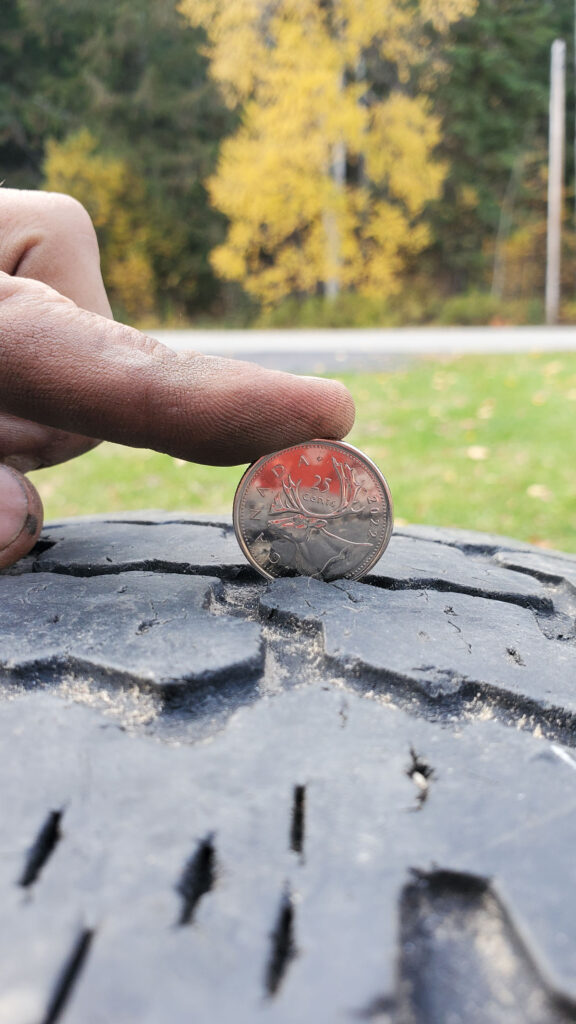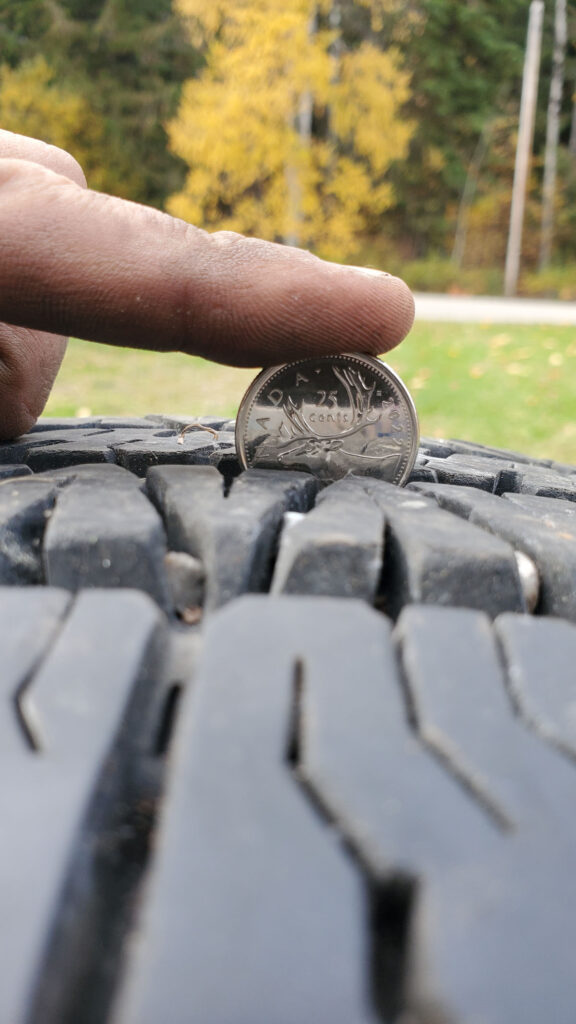

As of October 1st, vehicles in the Robson and Thompson Valley regions must have winter tires or chains until March 31. The timeline extends to April 30 for select highways, including mountain passes and rural routes in high snowfall areas.
Winter tires can help reduce risks associated with winter driving. They provide better traction and stopping distances when temperatures drop below 7C.
“They can’t help you if you don’t have them on your vehicle before poor weather arrives, though,” says Trace Acres, Program Director for Road Safety at Work and spokesperson for the 15th annual Shift into Winter campaign. “Waiting until rain, ice, or snow hits is too late.”
Tires displaying the three-peaked mountain/snowflake symbol and M+S (mud and snow) tires both meet the legal requirement as long as they have at least 3.5 mm of tread. Winter tires outperform M+S tires in cold and snowy conditions.
“Conditions can change quickly and you need to prepare now to help keep yourself and your passengers safe.”
Driving needs to change
Even the best tires aren’t enough on their own. Drivers also need to make adjustments when behind the wheel.
“Even if you’re only on the road for a few minutes, you need to prepare for winter driving hazards,” Acres says. “When conditions are treacherous, it’s better to postpone your trip, if you can. Your family would rather have you safe at home than have you hurt in a crash.”
Some trips aren’t easily avoided. Many people drive while working, for example. They may travel to see clients, go between work sites, or make deliveries. In all cases, they’re at risk. Nearly 40% of all work-related crashes in B.C. resulting in injury and time off the job occur from November to February, according to WorkSafeBC statistics.
So when driving has to happen, what can drivers do to help keep themselves and their passengers safe?
Shift into Winter suggests the following tips:
- Prepare your vehicle
Equip it with a set of four matched winter tires with the three-peaked mountain/snowflake logo, and an emergency kit. Top up the anti-freeze and check tire pressure. Inspect brakes, lights, and engine belts. Use winter wiper blades. If you drive an EV, check the charge level before setting out. Batteries drain more quickly in cold weather.
- Prepare yourself
Know before you go. Check DriveBC to see what you can expect on your route. Give yourself extra time to reach your destination and make sure your cell phone is fully charged. Tell someone where you’re going and when you expect to arrive. Postpone travel if it’s not essential when conditions are poor.
- Drive for the conditions
Slow down. Increase the distance between you and the vehicle ahead to at least four seconds. Accelerate and brake slowly. Make sure your lights are on. If you start to skid, ease off the brake or accelerator and look and steer in the direction you want to go.
- Ask your supervisor for winter driving training if you drive on the job
Employers are responsible for the safety of employees whenever they drive for any work-related reason, whether it’s full time, part time, or occasional.
Shift into Winter is managed by Road Safety at Work and supported by the Winter Driving Safety Alliance, a cross-section of public, private, and non-profit organizations committed to working together to improve safe winter driving behaviours and practices in B.C.
For more tips on winter driving safety visit ShiftIntoWinter.ca



